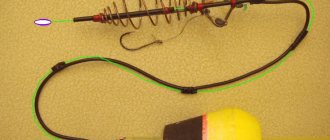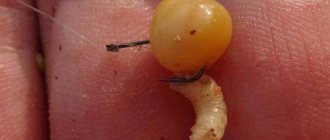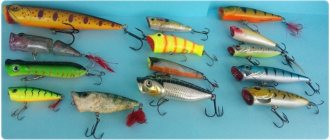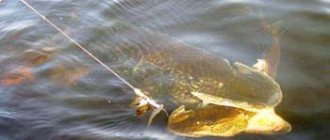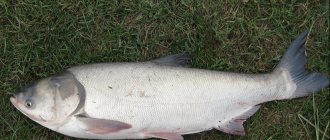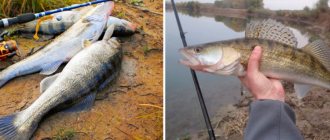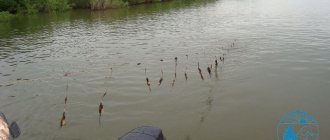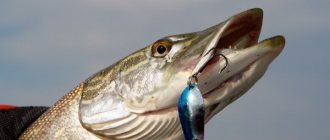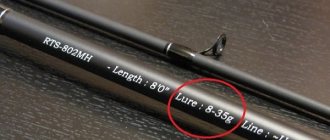Crabs, belonging to the arthropods, are considered the highest crustaceans of the order of the same name. They are found almost everywhere on our planet. The sea crab has five pairs of legs, with the first of them evolving into two powerful claws. The sizes of these short-tailed crayfish or Brachyura, as they are scientifically called, vary depending on the species. Typically, the sea crab has a shell ranging from two to thirty centimeters wide, although larger specimens are also found.
Where do crabs live?
Being close relatives of crayfish, Brachyura differs from their relatives primarily in the absence of a tail-abdomen. In fact, it is present in crabs, but it is very small and tucked under the chest. The sea crab failed to transform into a purely terrestrial arthropod. His life is closely connected with the water element, only in which he can reproduce. There are about four hundred species of crabs in nature. Almost all of them live in water and, like fish, breathe using gills. Some crabs move more along the seabed, others swim on the surface of the sea, and there are those who live under rocks on the coast.
Many Brachyura are edible: their meat is highly prized. It is not only rich in proteins, but also contains very little fat. Crabs are found on rocky European coasts, where they are caught in large quantities.
However, the best commercial species has long been the Kamchatka crab. It can be found in the seas of the Far East - Okhotsk, Japan and Bering. Due to its incredibly tasty and tender meat, Kamchatka sea crab has become an object of industrial fishing. But currently its population has sharply decreased, so zoologists are making attempts to breed it in artificial conditions. The crabs living in the waters of the Black Sea are also diverse. However, they have no commercial value.
Features of crab fishing
Content
Crabs are relatives of crayfish, but differ in anatomical structure, the main difference being the absence of a tail. More precisely, there is a tail, but it is almost invisible, tucked under the chest. Today, there are over 400 species of crabs that live in the water and come ashore exclusively to lay eggs. It is impossible to create a single algorithm for successful fishing in the sea in order to obtain these arthropods, since some move along the bottom, some swim on the surface of the water in the sea, and there are those that hide under stones on the shore.
Almost all crabs in the sea are edible and have high nutritional characteristics: rich in proteins and low in fat. These marine inhabitants tend to be found close to the coast in most middle seas.
Several main species of crabs live within the Black Sea
The largest and most promising species for fishing is the Kamchatka crab. Crabs live in the Bering, Okhotsk and Japanese seas. Kamchatka crab is actually divided into two types: king crab and snow crab. The second has smaller dimensions (from 500 g to 1.5 kg). King crab fishing is the most common and profitable business, as the length of the legs reaches 1.5 m, and the average weight is 3-5 kg.
The royal species is valued for its tender, delicious meat; industrial crab fishing in the seas of the Far East is usually aimed at catching this underwater inhabitant. Due to active fishing for this crab, its population has dropped sharply and attempts are being made to preserve the species.
Within the Black Sea there are several main types of crabs (stone and grass), although they are not of great value for commercial catching, they are still very tasty and healthy. Other species (there are about 20 in total) are either found in small quantities or do not have high nutritional value, but are difficult to obtain.
Read more
How to catch chub with fly fishing?
Representatives of crabs in the Black Sea:
- stone look. It is the largest crab, its shell reaches 10 cm in width, and often exceeds this value. He prefers to live on a rocky bottom, as he finds shelter in the stones. Catching such a crab is possible near small stone embankments and rocks. It’s easy to catch, just move the block, most likely a crab will run out from under it. It is a predator and prefers to catch snails, small fish and small crabs with its claws. Loves both deep and shallow depths, often found even 30 m under water;
- herbal look. It does not pose a danger to the fisherman, unlike the stone one, it is weaker and smaller. The size of the prey does not exceed 8 cm. It is usually found near the coasts and beaches with a rocky or sandy bottom, preferring algae thickets. Already at a depth of 20 m it is extremely rare. The grass crab is fast and extremely sharp, it gains great speed. The crab quickly gets used to humans, becoming tame in just 2-3 minutes. It feeds on mollusks, fry, and shrimp, but is also a scavenger. In some countries it is listed in the Red Book.
The fishing season for Kamchatka crabs is in the cold season.
The season for catching Kamchatka crabs is in the cold season. The season begins in October (from the middle of the month), and the fishing period ends in May. In general, it is possible to catch crab at any time of the year, but in May migration begins for the purpose of laying eggs. Fishing is prohibited during spawning as it may disrupt the migration of the crabs. Spawning continues until September.
Crab fishing in winter in the mid-latitudes is complicated due to low fishing activity. If the target is only crabs, it is better to use crab traps. The advantage of this method is that there is no need to dive into cold water.
How to catch crabs
It must be said that fishing and catching Brachyura are completely different processes from each other. Nevertheless, catching crabs is no less interesting than pulling a trophy specimen of any fish out of the water. There are several ways to catch these short-tailed crayfish. The sea crab hides under stones far from noisy crowded places. Many amateurs, wearing a mask and fins, dive to a shallow depth and, having found it, place it in a fishing tank made of durable material. This type of crab fishing is more suitable for tourists on vacation, for example, on the Black Sea. It should be remembered that Brachyura has quite sharp claws, so it is better to use thick gloves.
Where do they catch crabs?
Crabs are found in all seas and oceans, so there is a wide choice of fishing locations. They live both in shallow waters and in the depths of the seas. Small individuals often come out of the water to bask in the sun, but when they see danger they immediately hide under the stones.
At the depths of sea waters, they also hide in shelter. These can be stones, large shells and various debris that are suitable for a house . Wrecks are an excellent refuge not only for crabs, but also for small fish.
To fish at depth, fishermen use crab traps and trots. They are left overnight and the catch is collected early in the morning.
Using the potty
This special crab trap is a container made of wire. It is practically a metal mesh stretched over the rims. The pot has an entrance called the "neck". It is into this that the prey enters to feast on the bait. The pot is designed in such a way that even if you get into it. The crabs are unable to gain access to it, and they can no longer leave the trap.
The pot is believed to have been invented in 1920 by Benjamin F. Lewis. It is considered the most common method for catching crabs and is widely used throughout the world. A crab trap in the form of a pot is lowered several meters deep with the help of a rope. If there are crabs in this place, then after half an hour the catch is guaranteed.
Fishing with trot
A hunter who chooses this fishing method needs to know several secrets. Catching crab with a trot, although it requires some effort and time spent, nevertheless it gives you the opportunity to count on a rich catch. Let's consider this method in more detail. Trot is a line that is anchored between buoys along with bait. The installation process is quite labor-intensive, but this type of crab fishing always gives good results. Arthropods capture the bait while remaining on the line. Catching crab with a trot requires not only skill, but also the necessary attributes. For it you will need: a boat, a fishing tank, several buoys (from two to five pieces), thick gloves, bait, hooks, an anchor, an ice box in which the prey is placed, rope and fishing line.
Crab on a fishing rod
In Primorye, crabs have become so prolific that they rush to flounder fishing rods
But sea “spiders” have to be thrown back into their native element, and the delicacy has to be bought at an exorbitant price
With the opening of spring navigation for small vessels in Primorye, amateur fishermen feel like characters in Krylov’s fable. Remember: “The eye sees, but the tooth is numb”? Only the fox licked the grapes, which it could not reach, and our fishermen, with tears in their eyes, “deported” the crabs back to the sea, which almost climbed into the boats themselves.
“I don’t understand why I should throw away a crab that accidentally caught a fishing rod, and then, in order to pamper my family, go to the store and buy claws for 750-950 rubles per kilogram,” Vladivostok fishing enthusiast Vyacheslav Zimin is outraged by the situation. -If you dive into the crab trails, along the bottom they crawl over each other in three layers, multiplying like never before. Moreover, when there is a lot of crab, it eats up everything that moves at the bottom, and the result is a desert.
In fact, the ban on the production of the seafood delicacy, which has been in effect in Primorye since 2002, when the crab population in the water area was under threat of destruction, has played a positive role. But the subsequent population explosion in the depths of the sea did not change anything in the situation where crab remains a delicacy inaccessible to residents of coastal areas due to its high cost.
Of course, our fishermen are not such innocent violets. The technology for deceiving the fisheries inspection has been worked out. By the way, while boasting about their catches on fishing forums, our people came up with a special nickname for the crab. If you read that someone caught a couple of “spiders”, we are not talking about insects at all.
“I go out on a boat to fish for flounder, and the bait - squid or mussels - is attacked by a crab. It clings to an ordinary donka,” Zimin shares his experience. — During one fishing trip you catch three to five pieces. Many people let them go because they are afraid of running into a fine. But many people pack the caught crabs in a net and lower them overboard on a string. If a suspicious boat appears, cut the string with a knife, and no one will prove anything.
True, such a “drowned person” in a net is still doomed to perish at sea, so it ends up neither for himself nor for the people. Although in fact, forbidding an amateur with his fishing rods to catch anything at all is ridiculous. The species cannot be destroyed with a fishing rod.
Crabs in Primorye will die a natural death - from old age
Research by scientists confirms the observations of amateurs - there are a lot of crabs. To compile the forecast, TINRO-Center sent its ships on scientific voyages. The crabs were counted by the teams of the R/V "Bukhoro" and "Ostratelny". Trawls and traps placed in the interests of science showed that commercial male king crabs formed the densest aggregations in the northern and central regions of Northern Primorye and the eastern part of Peter the Great Bay. So there will be no harm if this year they catch 0.58 thousand tons of the sea delicacy, which is also called king crab for its excellent taste.
“In the last five years, in the southern part of the Primorye subzone, there has been a steady trend of increasing the number of commercial male king crabs, which indicates an actively ongoing process of restoring its fishing potential,” says Valery Koblikov, head of the laboratory of commercial crustaceans.
And snow crabs breed and reproduce even more actively. So much so that, according to scientists, in 2013, without any damage to the biosphere, 34.86 thousand tons of opilio could be fished out of sea waters. At the same time, amateur fishing accounted for only 10 tons in Primorye. So most of these marine inhabitants will simply die a natural death - from old age, because no one has lifted the restrictions on their fishing.
The ban could be lifted in mid-summer
Officials nevertheless heeded the recommendations of scientists. But the necessary paperwork to give fishermen more freedom will continue to wander through bureaucratic corridors for a long time.
— With the growth of commercial stocks in the Primorye subzone, it is planned to lift the ban on fishing for Kamchatka crab, blue crab, and hairy crab. New Fishing Rules for the Far Eastern Fishery Basin, which include the above changes, will be approved by the Ministry of Agriculture of the Russian Federation in June-July of this year (the crab goes to depth at this time and will be practically inaccessible from a boat - ed.) - Sergei Nastavshev, acting director of the Department of Fisheries of the Primorsky Territory, told Komsomolskaya Pravda.
And according to the current rules, within the borders of our region, during recreational and sport fishing, the production of Kamchatka crab, blue crab, spiny crab, hairy crab, and opilio snow crab is prohibited.
However, there is an exception to this prohibition: you can apply for a permit for extraction from organizations that have been allocated quotas for the extraction of these valuable biological resources.
True, the seafood delicacy can be legally obtained only south of Cape Zolotoy in the Terneysky region. In 2013, only four coastal enterprises that received quotas for catching arthropods living in the depths have the right to organize recreational crab fishing.
“We issue personalized vouchers to amateurs,” explained Anatoly Dub, director of Ulov LLC. – We provide instructions on the marine areas permitted for fishing and legal methods of production. The cost of the tour differs depending on the type of crab. For example, a “license” to catch two Kamchatka specimens will cost 500 rubles.
For residents of the northern regions, this may make sense. But it’s unlikely that fans from Vladivostok will travel 600 kilometers for a couple of copies.
SPECIFICALLY!
How much was allocated for recreational fishing in 2013?
Kamchatka crab
- "Primorrybvod" - 3,311 tons
- Preobrazhensky Fish Factory - 3,311 tons
- Society of Hunters and Fishermen "Tetyuhe" - 0.133 tons
- LLC "Ulov" - 13.245 tons.
Snow crab – opilio
- "Preobrazhensky Fish Processing Plant" - 0.909 tons
- Ulov LLC - 9,091 tons
Hairy crab
- Only “Preobrazhensky Fish Processing Plant” - 3 tons
HELP "KP"
The Kamchatka crab is one of the largest species, for which it is nicknamed the king crab. The weight of large males can reach 7.5 kilograms. However, even a 4-kilogram prey is not bad. They live at depths from two to 270 meters.
Opilio (snow crab) is found mostly at depths of seven to 100 meters. In the spring it approaches the shores to procreate. Weight is 2-2.5 kg, rarely up to 4 kilograms. It differs from other types of Far Eastern crabs in its smooth shell and relatively thin walking legs.
The hairy quadrangular crab (there is also a pentagonal crab, but it is very small) usually lives on sand and pebble soils in the range from 10 to 100 meters. In the waters of Rudnaya Bay and its environs, it begins to be found in winter (from January) at depths of 2-3 meters. Then, with an increase in water temperature, it moves deeper and already in June it is found at a depth of about 20 meters. 700 grams is the maximum weight. This species is highly respected by the Japanese and is considered healing.
Important!
Violation of the rules for the extraction (catch) of aquatic biological resources and other rules regulating the implementation of industrial fishing, coastal fishing and other types of fishing entails the imposition of an administrative fine
- for citizens in the amount of one thousand to two thousand rubles with or without confiscation of the vessel and other equipment for the extraction (catch) of aquatic biological resources;
- for officials - from ten thousand to fifteen thousand rubles with or without confiscation of the vessel and other equipment for the extraction (catch) of aquatic biological resources;
- for legal entities - from one hundred thousand to two hundred thousand rubles with or without confiscation of the vessel and other equipment for the extraction (catch) of aquatic biological resources.
Source: kp.ru
Features of fishing with trot
First of all, you need to go out to sea on a watercraft and install a mainline. This cannot be done from the shore. To do this, two buoys are connected to each other with a fishing line approximately one meter long. Then, a line with an anchor is attached to one of them. Hooks with bait are attached to the fishing line. Crabs are active in the mornings and late evenings. It is during this period that they should be collected. To do this, take a fishing cage into which the crabs removed from the bait are carefully placed. Be sure to use gloves. Experienced crabbers install several trots with different types of baits at once.
The best time to set up this gear is the morning after a hot and muggy night, as this is when the crabs are most active. The trot is removed in the first half when the prey is more lethargic and less likely to break free from the line when pulled. Experienced crabbers say that this gear should be installed parallel to the shore in those places where the bottom drops far. Typically these are areas between depths of five and twelve feet.
Bait selection
Crab fishing primarily depends on the right bait. Usually, many professionals conduct an experiment by placing different baits in a pot. The crab loves frozen fish, chicken necks, various shellfish or raw meat. He rarely refuses them. Frozen fish is best because it breaks down quickly, unlike fresh fish, which attracts prey. Commercial crabbers consider eels to be the best bait, but in our country this is a somewhat expensive “pleasure.”
Catching crabs using a pot
Crabs are caught in different ways, such as using a pot. You can buy it or make it yourself. The main condition is lightness and maneuverability. It’s not worth buying professional pots that weigh a lot; they are intended either for sport fishing or for commercial activities.
The pot is a box with wire sides and an entrance hole.
The bait is taken and attached so that the crab can approach it, but cannot feast on it. Once the crab is in the pot, quickly pull it out, using thick rubber gloves to pull the animal out of the trap. The trap should be left overnight; crabs are nocturnal creatures.
The trap should be marked so that it can be found in the morning without being confused with someone else's.
To catch crabs well, you need to choose the right bait. You need to conduct an experiment by planting various baits in the pot. Crabs love chicken necks, frozen fish, eel, various shellfish and just raw meat . They rarely refuse food, but sometimes it happens.
It is better to use bait that the animal often encounters in life.
When the crabs are caught, they should be placed in a container with ice. They are eaten within 24 hours, then they die. Eating dead animals is dangerous.
Mining by hand
Crab fishing with this method is best done near the shore near reefs, as well as under large rocks, where these arthropods often crawl. When there are no waves, catching them is not particularly difficult. The most suitable time for catching crabs using this method is considered to be morning or twilight.
If a person decides to catch Brachyura this way, then he will need a folding knife. Having discovered the place where this arthropod is hiding, you need to slip a blade there so that it grabs onto it, and then sharply pull it out. It is better to fish not alone, but with an assistant. In this case, one throws the crab with a knife, and the other immediately catches it in a net.
Industrial catching
Since 1994, experimental crab fishing began in our country, and since 2004, industrial fishing. Today, fishing is carried out mainly in the Barents and Norwegian seas. According to experts, in 2016 it amounted to thirty percent of the world catch for this type of fishing. The catch quota changes from year to year. There were years when it was even banned. Crab fishing today, despite the danger of the process, is attractive to many fishermen. After all, the valuable meat of this arthropod is highly valued. You can easily catch only those types of crabs that are of no value for sale, for example, marbled crabs or swimming swimmers.
Catching rare species
The Bering Sea is home to one of the rarest species, which is a delicacy. Its meat is of very high value. Red king crab is only caught for a very short time - just a week. Many people call this period the “gold rush”, since, regardless of weather conditions, almost all fishermen go out to sea to hunt. Conditions for catching king crab are extremely dangerous, but that doesn't stop anyone. Every year, crab fishing in the Barents Sea during this season takes the lives of up to ten or more people.
Recently, a new method of capture began to be used off the coast of Kamchatka. Some amateurs catch crab with a very ordinary fishing rod. Fresh fillets of cod or other fish are used as bait on the hook. The Kamchatka crab is a strong follower of instincts, so it does not let go of the swallowed bait even when the fisherman pulls it out of the sea. It must be said that such crab fishing is carried out solely out of sporting interest. In most cases, the fisherman who has pulled out the prey immediately releases it back.
How to catch crabs on the Black Sea. Where and how can you catch crabs?
Xantho poressa, or water crab. photo by the author
“Hurray, I caught a crab,” a young or adult diver with a mask shouts triumphantly to the whole area and a moment later reveals to the world, as a rule, a small, unfortunate crustacean, vainly trying to protect itself from cruel human hands with small claws.
Not so! The caught “trophy” is delivered to the shore, twisted and turned in the destructive scorching sun and, at best, thrown into a jar of water, without ever figuring out what to do with it...
The result of such an underwater “hunt” is known and sad: the most developed representative of crustaceans, which appeared on Mother Earth a little, many 180 million years ago, simply dies in vain. I am not afraid to say that every year on the Crimean coast of the Black Sea hundreds, if not thousands of crabs are destroyed in this way. Just for fun...
If we add to this the impressive “nth” number of already large individuals of Crimean crabs, which are caught by enterprising “natives” of our peninsula (usually illegally) for sale to vacationers as a delicacy or souvenir, then you can imagine the damage the crab tribe suffers every holiday season ...
Meanwhile, from the standpoint of the Law, the situation with Crimean crabs is more than clear and understandable. The fact is that all six, let’s say, species of crabs that come into human hands en masse (out of 19 that live in the waters of the Black Sea) are listed in the Red Book of Ukraine (including in the latest, third edition of 2009). With all the ensuing consequences for those who catch them: for fun, food or souvenir business. Let me emphasize that quite recently the fine for one caught crab from the Red Book ranged from 340 to 510 hryvnia, plus 15 hryvnia damage compensation for each.
Another thing is who issues these fines, how and in what quantity! And does he order it at all... Since already this year I have met more than once on the embankments of Crimean cities more than one seller with both boiled “Red Book” crabs and souvenirs made from them.
Therefore, I will name our “heroes” in more detail according to the conservation status of the species, defined in the Red Book of Ukraine. The list opens with herbal or Mediterranean crab, classified as a rare species. This is an inhabitant of shallow water, prefers grass thickets, but can also live among stones. The greenish shell of the “grass” reaches a width of 7-8 cm. When meeting a predator, not relying much on its claws, it takes off headlong. And he runs, albeit sideways, but very quickly - at a speed of up to 1 m/sec.
The marble crab, which received its name because of the characteristic pattern on the shell, corresponds to the same status. The marble crab has a blue-green to dark brown shell, mottled with many light stripes, reminiscent of variegated marble. Because of its dark color and long legs, it is often called the spider crab. This is the only Black Sea crab that runs out of the water and travels along coastal stones and rocks. At night, they can climb 2-5 m up rocks, and on gentle slopes move 5-10 m away from the water’s edge. However, at the first danger, they instantly take off and throw themselves into the water or the nearest crevice.
The hairy crab is considered an unappreciated species. It is similar to its stone counterpart, only its size is half the size. And the carapace is dark purple in color and covered with a thick layer of yellowish bristles-hairs. It lives closer to the shore, under rocks. Its diet is not too different from other crabs, but it is especially dangerous for various gastropods - it crushes their strong shells like nuts, only the fragments fly.
